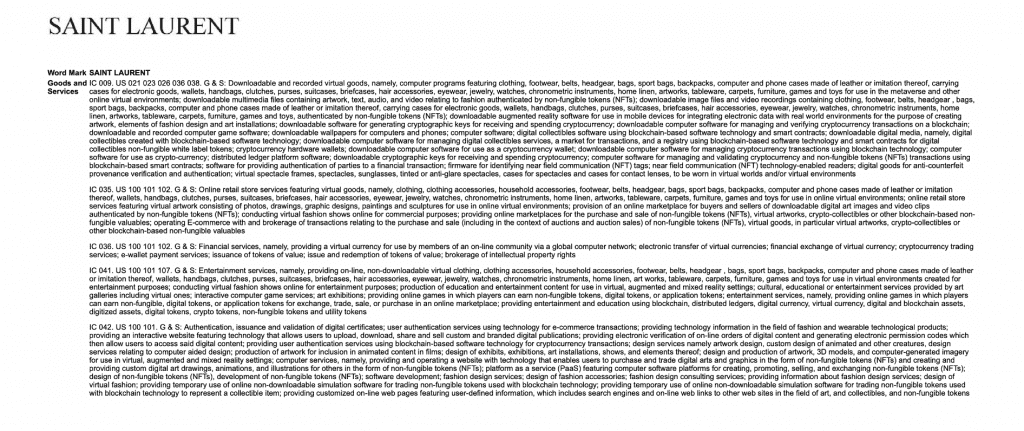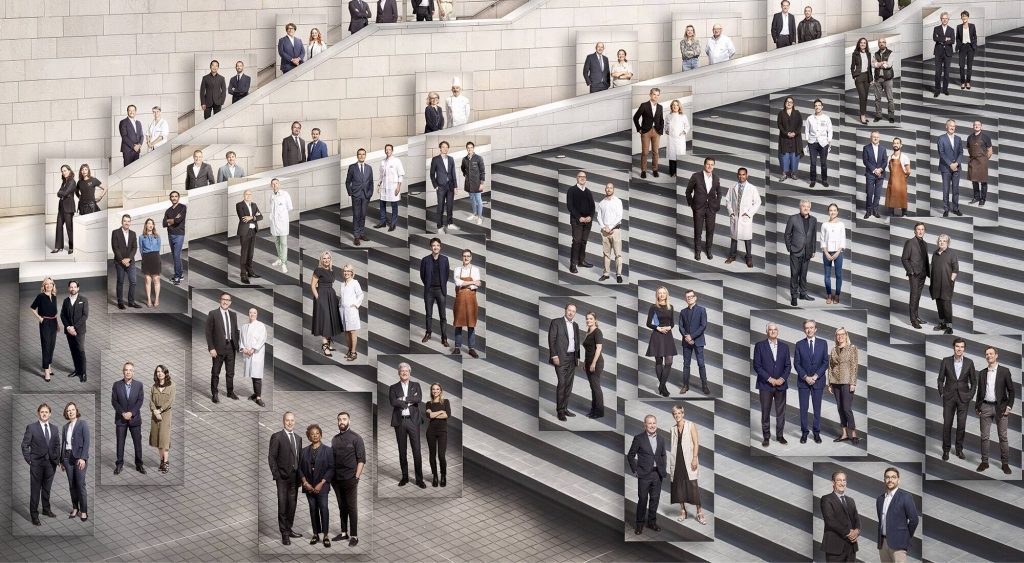Fresh from showing its Autumn/Winter 2022 collection in Paris early this month, Saint Laurent appears to be eyeing new opportunities to boost its revenues, as it is slated to become the next name under the Kering umbrella to reach “mega-brand” status. In the FY 2021 revenue report that it released in February, Kering paid considerable attention to Paris-based Saint Laurent, which is headed up by CEO Francesca Bellettini and creative director Anthony Vaccarello, noting that the growth potential for its second largest brand (following only behind Italian powerhouse Gucci) is “highly underestimated” and on an “exceptional growth path.” Based on a number of recent trademark filings, it appears that Saint Laurent may be looking to new realms for at least part of that growth, including the metaverse.
Potentially unsurprisingly, given the innovation-focused nature of the Kering group, Saint Laurent seems to be eyeing the metaverse. On March 16, counsel for the brand filed a trio of trademark applications for registration with the U.S. Patent and Trademark Office (“USPTO”) for SAINT LAURENT, a stylized version of the Yves Saint Laurent name, and the YSL logo for use in connection with (but not limited to) “downloadable and recorded virtual goods” (Class 9); “online retail store services featuring virtual goods” (Class 35); “financial services, namely, providing a virtual currency” (Class 36); and “entertainment services, namely, providing on-line, non-downloadable virtual clothing and accessories” (Class 41).
The same applications also cite the brand’s intent to use the Saint Laurent and YSL marks on services in Class 42, such as the “authentication, issuance and validation of digital certificates,” “platform as a service featuring computer software platforms for creating, promoting, selling, and exchanging non-fungible tokens (‘NFTs’),” and “design of non-fungible tokens.”

Taken together, the intent-to-use applications seem to suggest that Saint Laurent may be working on a potentially big venture in the virtual world, and frankly, any impending efforts in the space by Saint Laurent would hardly be surprising given the weight that Kering is putting behind the potential of the metaverse. Kering chairman and CEO François-Henri Pinault revealed in February that the French luxury goods conglomerate, itself, has a “full team dedicated to web3/metaverse, another full team at Gucci, and one at Balenciaga,” as well, which are working together as a network to focus on innovation at what he says is “the very early stage of what could be the metaverse” and web3 more broadly.
Kering’s brands has been making inroads into the “metaverse” by way of partnerships, such as Balenciaga’s tie-up with gaming platform Fortnite and Gucci’s pop-up experience within the Roblox ecosystem, which Pinault says are part of a multi-pronged effort to enhance brands’ expression/extend the reach of their existing products, to create “new products” – such as NFTs – “that do not exist in the physical world,” and to tap into “a lifetime revenue on intellectual property through smart contracts.” Gucci has since partnered with metaverse platform The Sandbox to purchase a plot of virtual land, while also teaming up with Superplastic to launch a collection of NFTs.
Reflecting on the segment of the market that it being touted as the metaverse, a recent Bloomberg Intelligence report puts a potential value of nearly $800 billion on the space come 2024. According to the company’s December 2021 report, “The convergence of the physical and digital realms in the next evolution of the internet and social networks using real-time 3D software presents an opportunity for leading online entertainment and social media companies” – and consumers goods brands, as well – “to capitalize on new revenue streams.” While “online game makers and social media platforms might be seen leading the space, there is ample room for luxury brand growth, too – many of these brans have already started initial concepts for their participation in the metaverse,” although, few have been as willing to test the waters as some of the brands on Kering’s roster.
The budding size of the metaverse and the early-mover status of Kering make any potential moves by Saint Laurent, which is angling to reach the 3 billion euros mark in annual revenue, and other similarly-situated brands in this space worth keeping a close eye on.











